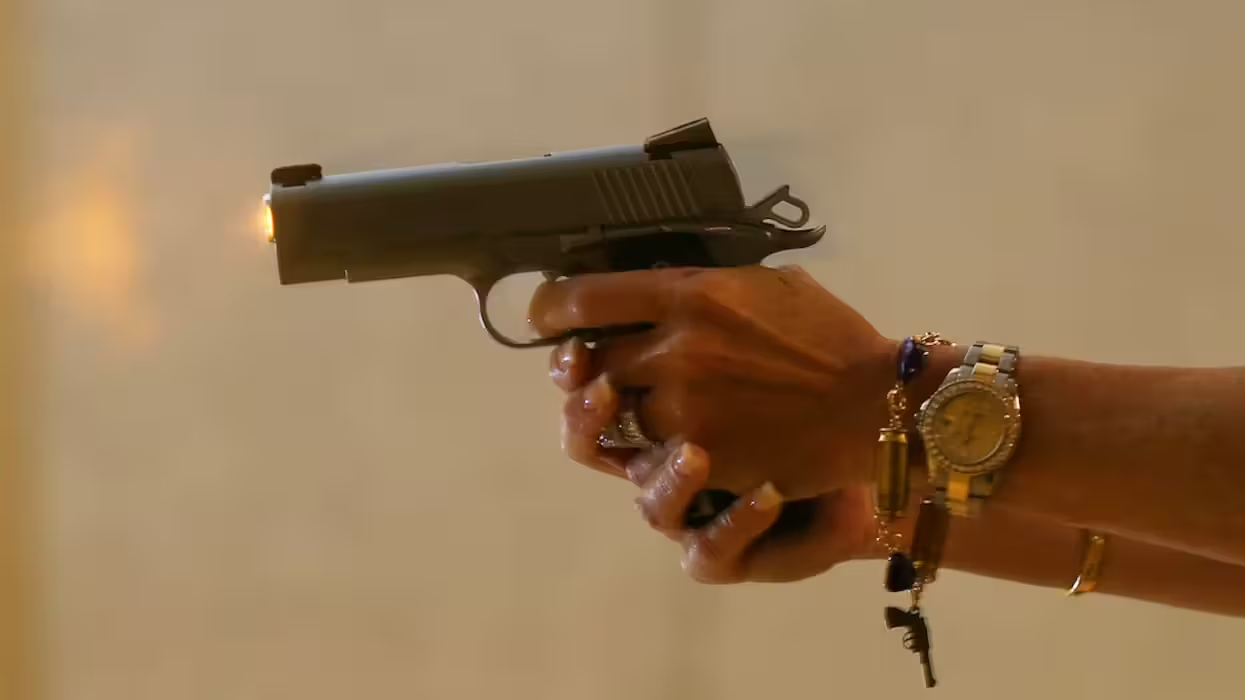
© 2025 Blaze Media LLC. All rights reserved.
See the CIA Declassified Photos of a Spy Satellite's Recovery From the Bottom of the Ocean
August 10, 2012
"many details of what happened next have been locked in government archives for 40 years."
Last year, the program managing the KH-9 Hexagon satellites -- also known as Big Bird -- was declassified and could officially be discussed in public.
Big Bird was considered the most successful space spy satellite program of the Cold War era. From 1971 to 1986 a total of 20 satellites were launched, each containing 60 miles (100 kilometers) of film and sophisticated cameras that orbited the earth snapping vast, panoramic photographs of the Soviet Union, China and other potential foes. The film was shot back through the earth's atmosphere in buckets that parachuted over the Pacific Ocean, where C-130 Air Force planes snagged them with grappling hooks.
Check out this declassified video released by the National Reconnaissance Office last year about the program:
The parachute of one of these buckets though broke off causing the capsule to sink immediately into the Pacific Ocean. It was recovered in a classified mission by the Navy's most advanced deep sea submersible at the time -- the Trieste II. Documents and photos from this 1972 mission to recover the bucket from more than 16,000 feet under water were declassified this week.
Wired notes that although the incident had been discussed in public before, "many details of what happened next have been locked in government archives for 40 years." There were two problems, according to Wired, that the bucket retrieval mission had to overcome: 1) "No object of this size had been actively searched for and located by sonar" and 2) "the Trieste II had not gone below 10,000 feet."
Check out this slideshow with a few of the photos:
Here's some of how the detailed recovery went:
At about 5:00 PM on 25 April 1972, Bartels, Stryker, and Taylor started their third dive for the bucket. Following a two-hour descent, and a three-and-a-half-hour search, they sighted a tangled mass of metal and screen wire harness 18 to 24 inches long and eight to ten inches wide.They next sighted two jagged gold foil pieces six to eight inches across. Transiting to a large sonar contact 800 feet away, they found what appeared to be a six-to-eight inch long piece of nylon webbing with a two-inch metal ring attached, and then, finally, the missing item embedded in the sea floor 18 to 24 inches. Evidence as to the object’s condition varies. An April message said it appeared intact with a hole in the center of the aft thermal bulkhead and multiple strands of film streaming out another hole at the 9 o’clock position about two or three feet, undulating with the sea current. Photos of the salvage operation and post-recovery analysis, however, indicate that the bucket probably broke apart and that the film stacks had detached from the structure and were laying exposed on the ocean floor. Only the bucket’s upper stage remained intact. This upper structure possibly appeared in the October photos the De Steiguer search team took and could account for the apparently inaccurate April report that the bucket was intact.
Ninety minutes of careful maneuvering, and six attempts later, the hook was in position to retrieve the film stacks. The submersible rose off the bottom, held motionless for ten minutes to allow silt and mud to drain, and once everything appeared secure, started a careful ascent, but the action proved too much for the fragile item. Ten minutes later, pieces of film began breaking off in lengths varying from one inch to two or three feet
Almost halfway to the surface, the film started breaking into two to three foot segments. By the time the Trieste II (DSV-1) neared the surface around 2:30 AM on 26 April, more than nine hours after starting its dive, pieces were hanging through the lines of the hook. To minimize surface swell, the hook was lowered to about 35 feet while a five-person dive team from the White Sands, 3,000 to 4,000 yards away, raced to the scene in small boats. The film stacks nevertheless continued breaking apart and disintegrated into a cloud of reddish brown dust about ten minutes before the divers arrived. All that remained were unusable shreds of film three to six feet in length hanging from the hook. Nothing suggesting a satellite remained for others to find.
Read a full story of the recovery of the bucket from the CIA here.
See the now declassified original documents from the CIA here.
The Associated Press Contributed to this report.
Want to leave a tip?
We answer to you. Help keep our content free of advertisers and big tech censorship by leaving a tip today.
Want to join the conversation?
Already a subscriber?
more stories
Sign up for the Blaze newsletter
By signing up, you agree to our Privacy Policy and Terms of Use, and agree to receive content that may sometimes include advertisements. You may opt out at any time.
Related Content
© 2025 Blaze Media LLC. All rights reserved.
Get the stories that matter most delivered directly to your inbox.
By signing up, you agree to our Privacy Policy and Terms of Use, and agree to receive content that may sometimes include advertisements. You may opt out at any time.






